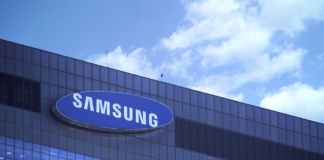The ability to download applications, services, and configuration settings over a mobile or cellular network is referred to as “over-the-air” (OTA). It is a method that enables the hardware that is connected to the internet to be remotely updated with new software and/or firmware settings, and it is basically called OTA updates.
Smart gadgets are being put to use in an expanding number of different applications, ranging from smart home systems to industrial control systems. By the year 2025, it is anticipated that the market for the Internet of Things will be worth more than $1.5 trillion. Unfortunately, despite the growing prevalence of devices that provide network-accessible capabilities, a significant number of these products do not implement adequate safety precautions.
It is possible for malicious actors to enter devices with inadequate security and aggregate them into what is known as a “botnet.” The consequences of these botnets may be quite severe, and they can occasionally lead to disruptions on a worldwide scale. Attacks using ransomware are becoming more prevalent. Even connected items that seem harmless, like fish tanks, can be used by malicious software to get in and cause expensive damage.
Advantages of Using Over-the-Air Updates in IoT
It is necessary for an Internet of Things device to have the capability of downloading updates over the air (OTA). This type of software update allows product developers, system integrators, and operators of Internet of Things solutions to gradually add new functionality to their products while also patching any security flaws that may exist.
The following are the primary advantages of using OTA updates for IoT:
- Enhanced Security and Adherence to Regulations: Rather than having to retrieve devices, developers may simply fix any identified vulnerabilities via OTA techniques, which can be done over the air. In addition, they make sure that the ever-changing legal and regulatory requirements are met in a faster and less expensive way.
- Reduced Costs of Maintenance: It is hard to guarantee that frequent manual upgrades will be performed when any devices are sent out into the field. Over-the-air (OTA) technologies allow smooth upgrades to be managed from a single platform. They replace services that require a lot of work and time.
- Constant Enhancement: Even while a product is on the assembly line or in the hands of a customer, a producer is able to make continual improvements to their linked systems, including the elimination of problems and the improvement of product performance. This is made possible through OTA updates. This strategy removes recalls and in-person maintenance and gives a competitive advantage: in this manner, there is no reason to wait to add new features to a fresh batch of devices.
- More Significant Revenue: After the product has been released, the company that made it can use OTA updates to add extra features even if they don’t have direct access to the software that needs to be updated.
- Reduction in the Cost of Operations: The results of the research done by Stout Risius Ross show that software problems are the cause of 15% of all recalls in all industries. Over-the-air (OTA) technology makes it easier to update and fix software, and IHS Automotive says that it could save businesses over $35 billion in operating costs.
Conclusion
In a nutshell, being able to do over-the-air (OTA) updates by way of an Internet of Things platform dramatically accelerates the IoT development process. It ensures that transparency is maintained and increases the dependability of linked devices. The over-the-air (OTA) feature has proven to be the most efficient method so far for managing releases and running remote upgrades on smart devices. Moreover, the system creates documentation for each individual stage of the process. Here is a short list of some of the many places where over-the-air updates have the potential to make a big difference in how well a system works:
- Predictive Maintenance: You are able to connect almost any piece of machinery or apparatus to the platform after equipping it with sensors. In this manner, you will get messages and alerts on the progress of the maintenance.
- Asset Monitoring: You are able to monitor all of the linked devices from a single place and in real-time. You also make your digital infrastructure easier to access and make sure that any needed security upgrades are made.
- Supply Chain Management: You can get a full picture of what is going on in your supply chain, including the right teams, and optimize where it makes sense.
- Environmental Monitoring: The Internet of Things platform brings together assets from a number of different distant places. It has a number of applications in the environmental field, including water management, agriculture, and others. By doing this, you can make sure that the resources available are used in the right way.







